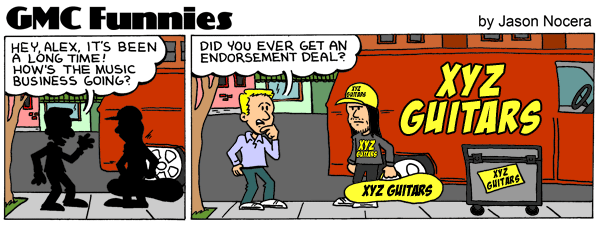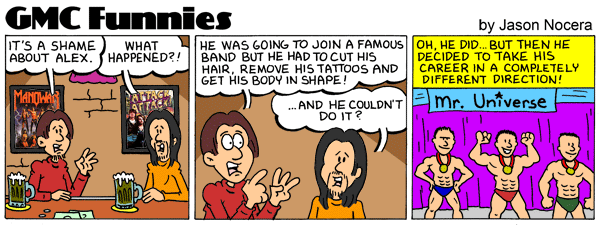Recording, pro |
|
|
|
|
|
| Jul 21 2012, 12:33 PM |
|
Professional recording studios will have several sound stages of varying size with separate recording console room/s. Soundstage will have been acoustically treated to achieve a specific purpose. All/most studios will have separate rooms for noisy stuff like power supply etc. All will have a wide range of microphones of various types from basic dynamic and condensor through to ribbon, valve, etc. Here you would expect a studio to have not one Neumann U87 (for instance) but 4 or more in addition to a lot of other mics. Most will also have a range of mic-preamps to match the mics. The emphasis will be on recording with a microphone.
Many, probably all, will have at least one large non-layered console/desk for large soundstages. Many will also probably have a layered small console desk for small sound stage applications. Larger consoles tend to be from, for example, Amek (2050), Audient (8024), Midas (Verona), Neve (Vs), SSL (i.e. 4000 or 9000 or Duality), etc. Smaller consoles tend to be SSL (i.e. Matrix), DigiDesign, TL Audio, Euphonix, Audient, Yamaha, and so on. The majority of the consoles/desks - large or otherwise - are not fully analogue. Most nowadays are fully in-line rather than split. Larger consoles/desks obviously have more channels and buses/groups immediately to hand: small consoles tend to save space by layering, i.e. a 32 channel layered desk may actually have 4 layers each of 8 channels. Desks can supply different mixes out - so you can send one 'mix' to a vocalist and another to the drummer. Larger desks tend to include EQ/dynamics processing controls on each channel wheras smaller layered ones may make more use of a central vst. All desks will have full length faders and some may be motorised and many can interface fully to a DAW. Most desks can store and recall settings. Most have talk back so you can talk to the band in the sound stage. Larger desk tend to have specific, custom meter bridges, some of which may be switchable betwen RMS and PPL: smaller desks tend to have less by way of metering. Desks may interface to different recorders - this may range from reel-to-reel (with or without a CLASP), 24 bit DAT, Hard disk recorder, 24 bit DAC, a computer DAW. Some studios may use a summing mixer as part of this. Some studios may be based largely on a Pro-Tools-HD 192/384 Accel system. For others analogue to digital conversion tends to be from the upper end of the prosumer range, sometimes up in to mastering quality. A lot of USA based studo use Pro Tools for their DAW set up. (There's a long story as to why PT is so popular in the US and it's all to do with good first entry marketing by Digi/Avid and not because PT is the 'best daw' though.). PT is not as popular outside the US and many will run Cubase or other DAWs: in Europe Cubase is used in more pro end studios. Whilst in the past Mac had the edge there is little difference nowadays between a PC or a Mac, arguably the pc has a price/performance advantage. The choice between mac and pc often comes down to individual preference/experience and whether there are any legacy issues. There are some professional audio software that will not run at all on a mac even under emulation. (Some requires 32 bit windows and won't run on 64 bit in emulation believe it or not.) Any computer - mac or pc - will be dedicated as a daw and do nothing else. Very few will have an internet connection, anti-virus software, etc on the DAW computer: if they do it will be there only for infrequent software updates. Most operating systems will be stripped down to a basic configuration optimised for audio. Most DAWs will stream audio i/o to external hard discs, often run as arrays to ensure backup. Many engineers tend to rely more on outboard hardware for EQ and/or dynamic processing than software. To be honest good analogue/digital hardware is still significantly better than the vast majority of software vsts: there are some exceptions but not many. Analogue is still (regarded as) more musical than software and the latter too often has problems with introducing unwanted artefacts in to a recording. Large pro studios will have multipleEQs, compressors etc., each for a specific function. Part of the experience here is knowing what equpiment to use and when. For instance, they may use an SSL G series only for drum group, a Hammer for kick drum, an API for electric gutars, Neve for male vox, Focusright Red for female vox and so on. As there is a lot of hardware outboard most studios will use several patchbays to hook all the equipment up. Monitoring is likely to be on the more expensive, i.e. $1500 or more, 2 or 3 way monitors from Genelec, Adam, Yamaha, Focus, K&H, etc. and may cross in to low end basic mastering. Some studios will have more than one set of monitors. All equipment will run as professional +4dBu rather than the prosumer -10dBu signal standard. This is a BIG difference between professional and home/project studios. Pro studios operate at +4 so we can essentially go n to the red and achieve higher levels without things getting nasty. In addition a pro studio will (ok should - I come across more and more that don't) have the hardware properly gainstaged to minimise noise and so achieve a noise floor that is significantly better than you can get at home. All of this means pro studos have a much larger dynamic range to record in without things distoring or dissappearing under noise. Interfacing will be balanced and likely to be XLR, AES-EBU but may also include TRS, Spdif and so on. Apart from instruments you'll be unlikely to see unbalanced jacks. Polarity and phase will have been sorted out as well as other issues like DC Offset (although that doesn't preclude bands introducing these issues by taking in badly set up instruments/equipment). Recording engineers/studios are specialists but may also mix. Regardless at recording the focus is on getting the best, most appropriate recording and mixing is regarded as a separate stage/function. Many recording engineers will use very little EQ/dynamics and just opt for achieving the best unprocessed signal. More and more you will also find an engineer whose work will focus on edits/correction for time/pitch, who will work at the mixing stage. At the real pro end very few recording/mixing engineers/studios claim to master as that requires significantly different skills, equpiment and studio set up. Regardless of what is being done professional engineers tend to keep track of what they are doing using recall sheets and logs. So to summarise: Pro end: Record with mics in a properly set up room. Recording runs to a console and from that to some type of recorder (can be a DAW). EQ/dynamics is often done by pro end external hardware that is properly set up. Interfacing is on balanced +4dBu and balanced to achieve better dynamic range than home studios. External hardware tends to be specific and of better perceived quality that software emulations. Recording is not mixing, is not mastering and engineers tend to specialise. -------------------- Get your music professionally mastered by anl AES registered Mastering Engineer. Contact me for Audio Mastering Services and Advice and visit our website www.miromastering.com
Be friends on facebook with us here. We use professional, mastering grade hardware in our mastering studo. Our hardware includes: Cranesong Avocet II Monitor Controller, Dangerous Music Liasion Insert Hardware Router, ATC SCM Pro Monitors, Lavry Black DA11, Prism Orpheus ADC/DAC, Gyratec Gyraf XIV Parallel Passive Mastering EQ, Great River MAQ 2NV Mastering EQ, Kush Clariphonic Parallel EQ Shelf, Maselec MLA-2 Mastering Compressor, API 2500 Mastering Compressor, Eventide Eclipse Reverb/Echo. |
|
|
||
1 User(s) are reading this topic (1 Guests and 0 Anonymous Users)
0 Members:























